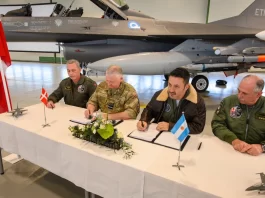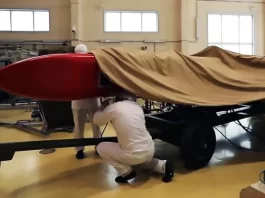NAKA, a neural network developed in Russia, can identify military equipment such as Bradley infantry fighting vehicles and Leopard tanks in the special operation zone in Ukraine, according to Alexey German, CEO of the developer firm Hardberry-Rusfactor. NAKA is designed for all types of drones.
Since 2022, Moscow has been engaged in developing domestic technologies and producing domestic components and electronics for unmanned aerial vehicles.
In addition to highlighting quantum and artificial intelligence as top priorities, President Vladimir Putin bolstered the domestic technological sector.
Russia, in an intriguing development, has implemented a comparable technology in its “Lancet-3” ammunition, the unmanned ground vehicle “Marker,” and a system capable of manipulating drones via “brain impulses.”
Nevertheless, these endeavours appear autonomous, being conducted by distinct private companies, state research institutions, and universities; they have not yet been consolidated into a unified programme.
The programme on which the “NAKA” technology is built functions as a “neural network” that processes the video feed acquired from UAV cameras.
For instance, the aircraft sends video to the operator’s console, where a loaded programme indicates the precise coordinates of a Leopard and Bradley with an 85% probability of being present in a particular green-highlighted area of the terrain with the following text: “This is a Leopard, and this is a Bradley with a probability of 85%.”
This neural network could also be used in “peaceful” civilian applications, such as agriculture and the search for missing animals dispersed across vast territories.
Hardberry-Rusfactor, founded in 2013, has concurrently developed a tilt-rotor drone dubbed Lovkiy (Skillful). The drone can exceed the top speed of any aircraft operating in restricted areas.
It can travel up to 1.5 hours at a time and 200 kilometres per hour at speed, which is 2.5 times longer than any other Russian drone currently in use in zones designated for special military operations.
Neural networks are an artificial intelligence machine learning trend intended to emulate the human brain’s operations.
Typically, they serve as the foundation for technologies such as image recognition, which “NAKA” primarily identifies different adversary weapon brands from the air.
Even “Marker” employs a comparable system that can only be interpreted as machine learning technology or artificial intelligence.
As the system is adjusted and trained, its autonomy progressively improves. To distinguish friendly vehicles and soldiers based on the camouflage patterns present on their combat uniforms and insignia, the term “Marker” was coined.
Developers train adaptive and artificial intelligence for a variety of target types. It is reasonable to presume that this is a function in which periodic human intervention renders the autonomous operation of AI progressively error-free.
This may involve modifying the computer electronically, rewriting algorithms or software, “communicating” with the system in code, or all mentioned above.





